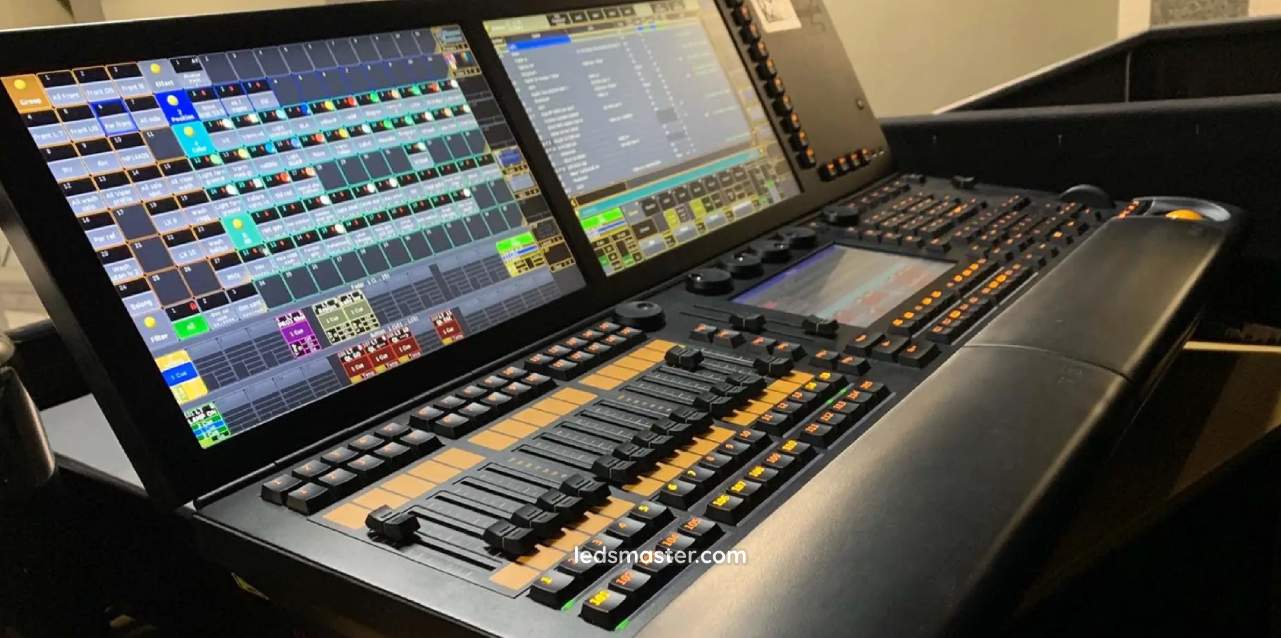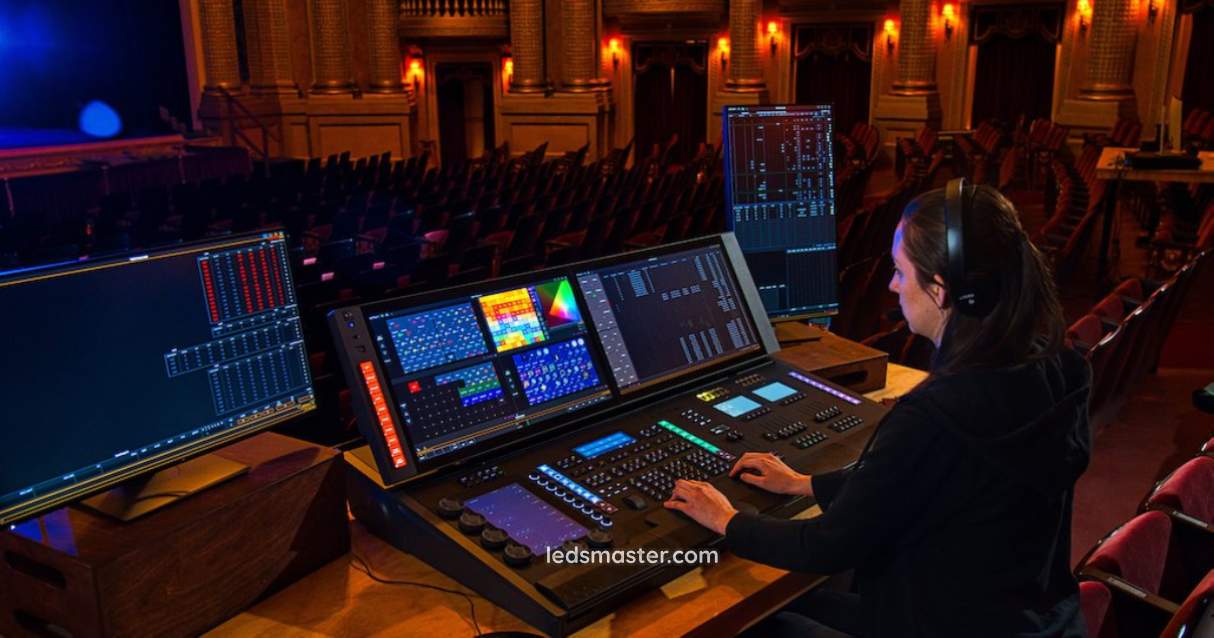
Advanced lighting control systems provide precise management, optimizing efficiency and reducing energy costs. Elevate your environment with smart illumination solutions designed for peak performance and engagement.
Get your complimentary lighting design today
The integration of advanced control systems with LED lighting has revolutionized how we manage and utilize artificial light. Lighting control systems have moved beyond mere on-off switches, offering sophisticated solutions that enhance both functionality and efficiency. This article delves into the realm of lighting control, exploring its fundamental concepts, popular systems, applications, and benefits. As LED technology continues to gain prominence, understanding how to effectively control and optimize LED lighting is essential for achieving energy savings, improving user experience, and ensuring sustainability.
Lighting control refers to the mechanisms and systems used to adjust and manage artificial lighting. These controls can regulate various aspects of lighting, including intensity, color, and timing. The primary goal is to create lighting environments that are both functional and comfortable while minimizing energy consumption and operational costs. Advanced lighting control systems are particularly beneficial in settings where lighting needs frequently change, such as commercial buildings, industrial facilities, and residential spaces.
Table of Contents
ToggleManual controls include traditional switches and dimmers that allow users to adjust light levels manually. These options are simple and cost-effective, providing basic control over lighting without the need for advanced technology. However, they lack the automation and flexibility of more sophisticated systems. Manual controls are often used in residential settings or in spaces where lighting needs are relatively static.
Time-based controls use timers to turn lights on or off at predetermined times. These systems are commonly employed in outdoor lighting applications and can be integrated with dusk-to-dawn sensors to ensure lights operate only when necessary. By automating the lighting schedule, time-based controls help reduce energy consumption and provide convenience in managing lighting based on time-of-day requirements.
Occupancy sensors detect the presence or absence of people in a space and adjust lighting accordingly. These sensors are particularly useful in commercial and industrial settings where energy savings are a priority. By ensuring that lights are only active when rooms are occupied, occupancy sensors help conserve energy and reduce operational costs. They can be integrated into existing lighting systems to provide enhanced control and efficiency.
Daylight harvesting systems adjust artificial lighting based on the amount of natural light entering a space. These systems maximize the use of natural light during the day, reducing the reliance on artificial lighting and resulting in significant energy savings. By continuously monitoring daylight levels and adjusting artificial lighting accordingly, daylight harvesting systems help create a more dynamic and energy-efficient lighting environment.
Integrated lighting control systems combine lighting controls with other building systems, such as heating, ventilation, and air conditioning (HVAC). This advanced approach provides centralized control and management of all building systems, resulting in greater efficiency and ease of use. Integrated systems allow for seamless coordination between various building functions, optimizing overall performance and energy use.

Several popular lighting control systems have emerged in recent years, offering various features and benefits. These systems cater to different needs and preferences, from simple residential applications to complex commercial installations.
DALI is a widely used lighting control protocol that enables communication between lighting devices and control systems. It allows for individual addressing of lights, enabling precise control over each fixture. DALI is particularly useful in large installations where different lighting zones need to be controlled independently. This system supports dimming, color temperature adjustment, and scene setting, providing flexibility in managing lighting environments.
Zigbee is a wireless communication protocol commonly used in smart lighting systems. It operates on a low-power mesh network, allowing for seamless communication between devices. Zigbee-based lighting control systems offer high scalability and flexibility, making them ideal for both residential and commercial applications. Users can control lights remotely via smartphones or voice assistants, and the system can be integrated with other smart home devices.
Lutron is a leading manufacturer of lighting control systems, known for its advanced dimming and automation technologies. Lutron systems offer a range of solutions, including wired and wireless controls, to cater to various needs. Their systems are renowned for their reliability and ease of use, providing users with precise control over lighting levels and scheduling.
KNX is an international standard for building control systems, encompassing lighting, HVAC, security, and other building functions. It allows for the integration of various control systems into a unified network. KNX systems are highly customizable and scalable, making them suitable for large-scale commercial and industrial applications. They support both wired and wireless communication, offering flexibility in system design.
DMX is a control protocol originally designed for theatrical lighting and stage effects, but its applications have expanded to various lighting scenarios, including architectural and entertainment lighting. DMX operates using a digital signal to control lighting fixtures, offering precise control over color, intensity, and effects. It is particularly useful for applications that require complex lighting arrangements and dynamic changes. In the context of LED lighting, DMX provides the capability to create intricate lighting designs and effects, making it a popular choice for concerts, theatrical productions, and architectural projects. The protocol allows for real-time control and synchronization of multiple fixtures, ensuring cohesive and visually engaging lighting displays.

In commercial buildings, lighting control systems are crucial for optimizing energy use and enhancing occupant comfort. Systems such as occupancy sensors and daylight harvesting ensure that lighting is used efficiently, adapting to changing needs throughout the day. Automated controls also help in maintaining consistent lighting levels, improving the overall work environment.
Industrial facilities often require robust lighting solutions to ensure safety and productivity. Lighting control systems in these settings can manage high-intensity lighting, reduce glare, and improve visibility in work areas. Advanced controls can integrate with other industrial systems, such as machinery and security, to create a comprehensive management system.
Sports facilities require specialized lighting control systems to enhance performance and ensure safety. In venues such as stadiums and arenas, lighting control systems manage the intensity and color of lights to support various activities and events. Automated controls adjust lighting based on the type of sport, time of day, and specific requirements of the event. This ensures optimal visibility for players and spectators, while also allowing for dynamic lighting effects during entertainment and ceremonies. Advanced systems can also integrate with broadcast and media setups to provide uniform lighting conditions for television and live streaming, enhancing the overall experience for viewers and participants.
One of the most compelling advantages of lighting control systems is their substantial contribution to energy efficiency. These systems are designed to adjust lighting levels dynamically, responding to changes in occupancy and natural light. For instance, occupancy sensors ensure that lights are only active when rooms are occupied, significantly cutting down on energy waste. Similarly, daylight harvesting systems adjust artificial lighting based on the amount of natural daylight entering a space. By leveraging natural light, these systems minimize the need for artificial lighting during daylight hours, resulting in considerable energy savings.
The energy efficiency of lighting control systems is further enhanced by their compatibility with LED technology. LEDs are inherently more efficient than traditional lighting sources, consuming significantly less power for the same level of illumination. They also have a longer lifespan, reducing the frequency of replacements. When combined with advanced control systems, LEDs offer an optimized solution for energy management, reducing both operational costs and environmental impact. This synergy between control systems and LED lighting creates a robust framework for achieving maximum energy efficiency.
Lighting control systems play a crucial role in enhancing comfort and productivity by allowing users to tailor lighting environments to their specific needs. In commercial and industrial settings, these systems enable precise adjustments to lighting levels, which can help alleviate glare and improve visibility. This is particularly beneficial in work environments where adequate lighting is essential for performance and safety. By adjusting the intensity and distribution of light, these systems can create an optimal visual environment that reduces eye strain and fatigue, ultimately leading to improved productivity and job satisfaction.
In residential settings, lighting control systems offer the ability to create customized lighting scenes that cater to various activities and moods. Whether it’s a bright, focused light for reading or a soft, ambient glow for relaxation, users can easily adjust their lighting preferences to match their activities and preferences. This customization not only enhances comfort but also contributes to a more enjoyable living experience. The ability to set different lighting scenes for different times of day or occasions allows for greater flexibility and personalization in home lighting.
The impact of lighting control systems on security cannot be overstated. By ensuring that areas are well-lit when needed, these systems play a significant role in deterring potential security threats. For example, outdoor motion sensors can trigger lights to illuminate pathways and entryways when movement is detected, discouraging unauthorized access and enhancing safety. This proactive approach to lighting helps to create a more secure environment by ensuring that all critical areas are adequately illuminated when needed.
In healthcare facilities, precise control over lighting is essential for both patient care and safety. For instance, adjustable lighting can improve visibility during medical procedures, reducing the risk of errors and enhancing the overall quality of care. Furthermore, proper lighting in healthcare settings can contribute to a calming environment for patients, which is important for their overall well-being. By ensuring that lighting is appropriately managed and adjusted, these systems help create safer and more effective healthcare environments.
The initial investment in advanced lighting control systems may be higher compared to traditional lighting solutions, but the long-term financial benefits are significant. These systems contribute to cost savings by optimizing energy usage and extending the lifespan of lighting fixtures. By reducing unnecessary energy consumption through features like occupancy sensors and daylight harvesting, these systems lower utility bills and decrease the overall cost of lighting operations.
The cost-effectiveness of lighting control systems is further amplified by their compatibility with LED lighting. LEDs are known for their low power consumption and extended operational life, which reduces the frequency of replacements and associated maintenance costs. As a result, the combined use of advanced control systems and LED technology not only improves energy efficiency but also offers substantial savings on maintenance and operational expenses over time.
Modern lighting control systems are designed with integration and scalability in mind, offering seamless compatibility with other building systems. For example, these systems can be integrated with HVAC and security systems to provide a unified management platform. This integration allows for centralized control of various building functions, enhancing overall efficiency and simplifying management tasks. By coordinating lighting with other building systems, users can achieve a more cohesive and efficient operation.
Additionally, many lighting control systems are designed to be scalable, allowing for easy expansion or modification as needs evolve. Whether upgrading an existing system or integrating new features, scalability ensures that lighting control systems can adapt to changing requirements and future growth. This flexibility is particularly valuable in dynamic environments where building use and technology requirements may change over time. By providing a scalable solution, lighting control systems ensure that investments remain relevant and effective in the long term.
The integration of advanced control systems with LED lighting has revolutionized lighting management, moving beyond simple on-off switches to offer sophisticated solutions that enhance both efficiency and functionality. This article has covered key aspects of lighting control, from fundamental concepts to popular systems and their applications. As LED technology evolves, effective control and optimization become crucial for energy savings, improved user experiences, and sustainability. Embracing these advancements ensures smarter, more efficient lighting solutions.